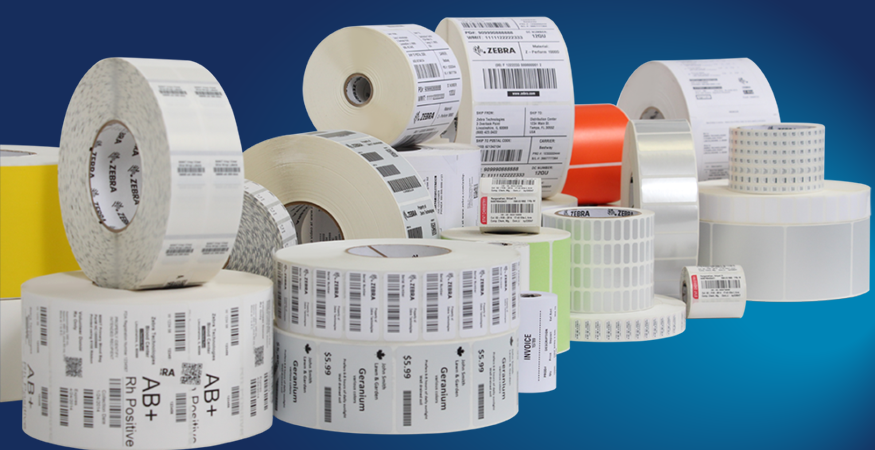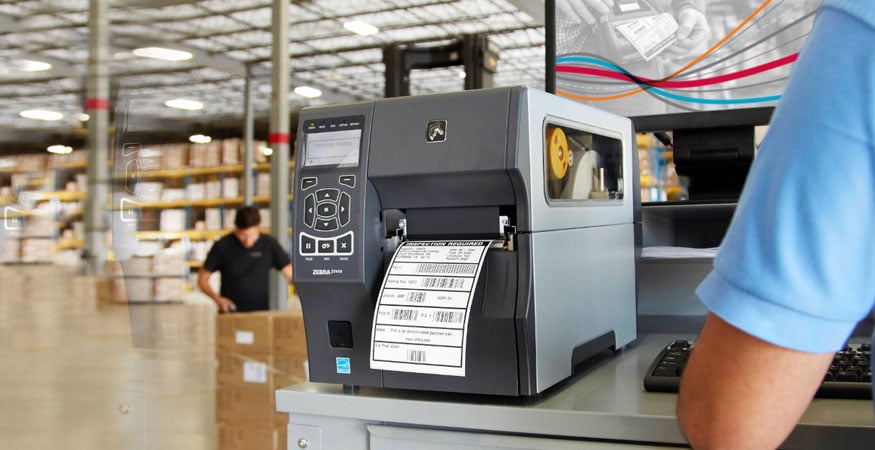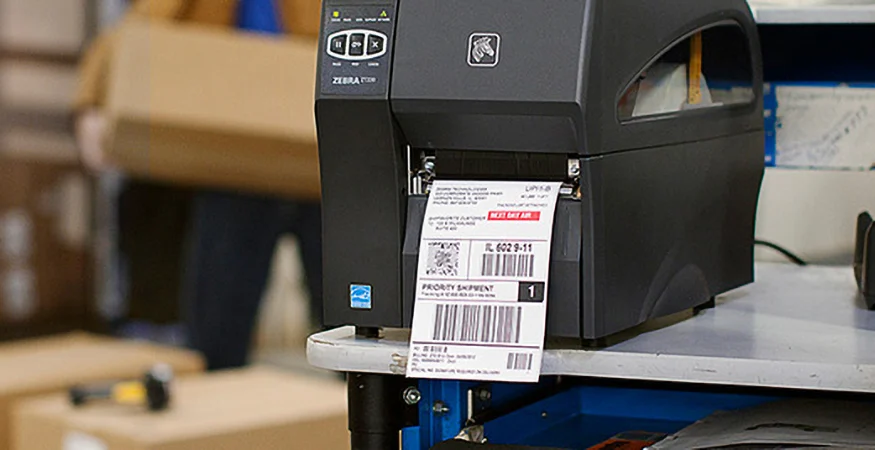For most companies, the thermal printer is one of your most reliable assets, quietly printing labels, barcodes and signs for your everyday workloads. However, these machines only remain reliable if you provide them with the right paper and supplies.
You might not be aware that thermal printers need special media to print, or that it is important to use the right kind of media for your thermal printer.
In addition to requiring specialized media, thermal printers may need different specialized supplies to print properly. If you don’t feed them the proper media types, the printers will either not print at all or break down quickly. For mission-critical printing, you need reliable printers. Here’s what you need to know about printing on thermal media.
THE TYPES OF THERMAL PRINTING PAPER
Thermal printers require special media because the thermal printing mechanism prints images and text without ink. Thermal media is different from regular paper in that the media is coated with a mixture of dyes and chemicals. The printhead in a thermal printer heats areas of the paper, making the desired words and images appear. When heated, the dye reacts to the chemicals taking on a color. The colors are usually limited to black but occasionally blue or red can be employed.
In addition, the print method of your thermal printer will impact your choice of media. A Direct Thermal printer printhead heats the media surface to render the image onto the label. This requires a special coated direct thermal label media.
Thermal Transfer uses a ribbon with the printhead to render the image on the label. Some larger thermal printers can use either Direct or Transfer media, but others, particularly smaller desktop or mobile printers, are limited to a specific print method. Thermal Transfer media will not print on a Direct Thermal printer, nor will Direct Thermal print labels print correctly on a Thermal Transfer printer.
Thermal media feels different than regular printer paper and has a shiny surface that can be difficult to write on with a pen. If you scratch the paper with your finger, a mark will often appear on the surface of thermal paper. Most thermal paper has three layers:
- The substrate layer (the label media itself).
- The base layer, which holds binding elements made from gelatin and salts, allowing the heat to move through the paper.
- The active layer, which carries the chemicals that make the paper react to heat.
Some thermal media may have a fourth, protective layer to help prevent the paper from fading. This paper will be ideal for signage or labels that will be exposed to the elements for prolonged periods.
CHOOSING YOUR THERMAL PAPER MEDIA
Thermal paper may not even be paper at all, as many paper, plastic and even metallic media options exist. Label media comes in many different sizes and types, not only to fit different printers but to meet various requirements for adhesion longevity, environmental resistance and even suitability for the surface shape receiving the label. Before choosing thermal media you need to know the correct size and model of thermal printer you are using. The standard information for each thermal printer includes:
- Width – the size of the roll from side to side
- Length – the length or amount of paper wound on the roll
- Core size – the diameter of the tube on which the thermal paper is rolled.
From these basics, you also need to understand a few additional elements to ensure your label media performs as expected:
- Resistance – what does the label need to withstand?
- Environment – where does the printer print and where do the labels live?
- Surface – shape, texture and material are all key to selecting the right label media.
- Volume – do you print many labels occasionally or a few labels all day long? Either way (or any combination thereof) will impact what printer and label media you need.
You might also consider whether you want to invest in environmentally friendly thermal rolls, since thermal paper can include toxic chemicals. Bisphenol A (BPA) is an organic synthetic compound that is found in many plastic containers but is also part of the coating of some thermal paper and barcode labels. BPA is suspected of having negative health effects and being connected to risks of cancer, diabetes, obesity, and developmental disorders. Fortunately, BPA-free thermal paper is available.
We hope this is a useful introduction to the function and uses of thermal media. In many cases, basic label media will perform sufficiently, but just as likely, requirements and variables will impact label performance.
If you’d like to learn how GFC can help your business adopt reliable thermal label printers and supplies, please contact us. We have the right tools, expertise and resources to keep any organization’s thermal printers running at peak efficiency.










